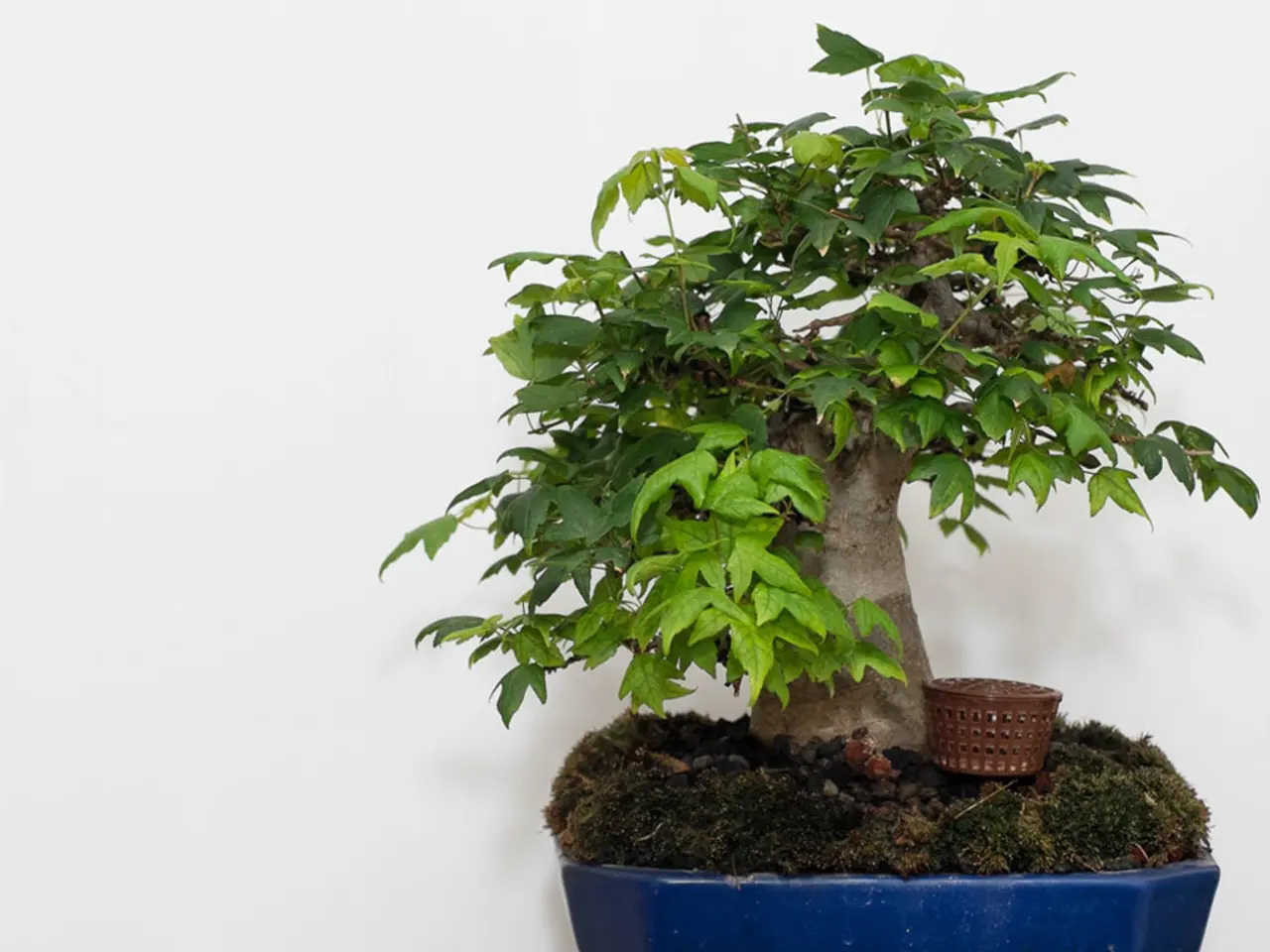Valuable Insights Gleaned from Caring for a Bonsai
In the realm of horticulture and art, bonsai stands as a unique and captivating testament to the harmony between man and nature. This ancient practice, with roots tracing back to around 200 B.C. in Ancient China, has evolved over centuries to become a cherished cultural icon and a symbol of patience, beauty, and creativity.
Originating as penjing or pening, bonsai's early form involved miniature landscapes and trees cultivated in shallow containers, reflecting Taoist ideals that expressed harmony with nature. This art form made its way to Japan between the 6th and 12th centuries through Buddhist monks and diplomatic missions, where it was refined into the practice we know today as bonsai.
In Japan, bonsai evolved into a focus on individual miniature trees as living sculptures, embodying Zen Buddhist principles such as simplicity, natural imperfection (wabi-sabi), and meditative patience. This refinement, which took shape from the 12th century onward, deeply influenced by Zen Buddhism during the Kamakura and Muromachi periods (13th to 17th centuries), transformed bonsai into a profound artistic and philosophical practice.
Bonsai became not just a horticultural hobby but a spiritual and artistic expression embodying patience, harmony, and respect for nature's slow transformations. This blend of art, philosophy, and horticulture contributed to its enduring cultural significance in Japan.
The global popularity of bonsai grew primarily in the 20th century, supported by exhibitions, cultural exchanges, and the establishment of bonsai collections worldwide. Bonsai was first displayed on the international stage at the World's Exhibition in Paris in 1878, and it captivated enthusiasts globally as a symbol of natural beauty, patience, and craftsmanship.
Today, bonsai continues to enchant people worldwide, offering a unique opportunity to connect with nature and express creativity. While many species of bonsai should be kept outside for natural season cycles, some tropical and subtropical species thrive indoors. Six types of bonsai trees that do well indoors include Ficus, Sweet Plum, Fukien Tea, Hawaiian Umbrella, Jade, and Juniper.
Caring for a bonsai tree can help build a routine, contributing to overall happiness and decreased stress levels. However, it requires patience as they take time to grow and require daily care. The shape of a bonsai tree can be controlled through the process of "wiring," which involves wrapping wire around the trunk and branches to bend and reposition them.
For those interested in learning more about bonsai, resources such as the Bonsai World platform offer articles, a shop, and a Facebook group for connecting with other enthusiasts. This rich history reflects both bonsai's spiritual depth and its artistic evolution that enabled it to captivate and inspire people around the world.
References: [1] Bonsai Empire. (n.d.). History of Bonsai. Retrieved from https://www.bonsaiempire.com/bonsai-encyclopedia/history-of-bonsai/ [2] The Metropolitan Museum of Art. (n.d.). Bonsai. Retrieved from https://www.metmuseum.org/toah/hd/bons/hd_bonsai.htm [3] National Bonsai & Penjing Museum. (n.d.). History of Bonsai. Retrieved from https://www.usnabonai.org/history-of-bonsai/ [4] National Bonsai & Penjing Museum. (n.d.). The National Bonsai & Penjing Museum Collection. Retrieved from https://www.usnabonai.org/collection/ [5] The Art of Bonsai. (n.d.). Bonsai Styles. Retrieved from https://www.theartofbonsai.org/styles/
The art of bonsai, originating from penjing or pening, has notable connections with home-and-garden pursuits, particularly gardening, as it involves the cultivation of miniature trees in shallow containers. In response to the ancient practice's spiritual and philosophical roots, a dedicated lifestyle has emerged around the care and maintenance of these living sculptures.



